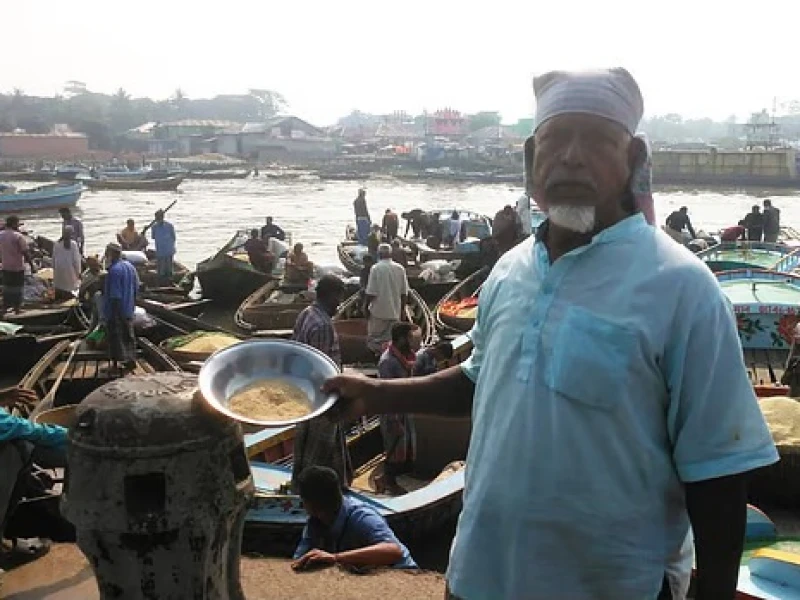Under the crisp autumn sky and blazing sunshine, small boats without roofs glide across the Sandhya River, carrying sacks of rice neatly stacked inside. Some boats run on simple engines while others rely only on oars. They belong to the Kutiyaals—traditional millers who transform paddy into rice and bring it to the floating market. For a few hours, the river itself turns into a bustling city of shops afloat.
From early morning, boats loaded with rice start gathering on the river beside Banaripara municipal town in Barishal. As they sway with the waves, a captivating scene unfolds. Each boat becomes a floating shop, carrying within it a century-old legacy.
Buyers arrive, bargain, and load sacks onto wholesale boats. The market runs until noon, while Saturdays and Tuesdays turn into festive gatherings. Locals fondly call it “Bhashan Mahal” (floating palace).
The river hosts two distinct markets: rice on one bank, paddy on the other. The Kutiyaals buy paddy here, take it to their husking mills, and within days return with golden grains of rice. The market becomes even more vibrant during the harvesting season. Once famed for its fine Balam rice, the market now largely relies on local varieties and BRRI paddy.
Another unique feature is that all transactions are conducted in cash. There are no middlemen. Sellers anchor their boats in the river while buyers select and purchase directly. Elderly traders recall that before independence, businessmen from Barguna, Bhola and Patuakhali also came here.
Women play an invaluable role in keeping the market alive. Before the boats set sail, they prepare the rice—drying, packing into sacks, and getting the boats ready through the night. At dawn, they bid farewell to their husbands and sons heading for the river.
Faruk Hossain, who has been in the trade for 35 years, says the work would be impossible without his wife’s support.
The exact origins of this floating rice market remain uncertain, though elders believe it has survived for at least 200 years.
Even today, the boats on the river bear testimony to a river-centric economy that refuses to vanish. Modern transport and commercial methods may have weakened its glory, but those who still come are bound by a sense of tradition.
Local businessman Mizanur Rahman notes that the market survives because of the Kutiyaals.
If they decline, the market itself loses its vibrancy,” he said, adding that the trade has been passed down through generations for centuries.
The floating rice market is more than just a place of commerce—it is a symbol of a riverine civilization.
The river flows like blood, the boats breathe like lungs, and the sweat of the Kutiyaals turns paddy into grains that float across the water.
Despite the waves of modernity, this heritage market still stands—perhaps less crowded than before, but still rich with the flavor of life, the scent of earth, and the timeless poetry of the river.


-1759473153.webp) Prev Post :
Prev Post :
-1759563502.webp)